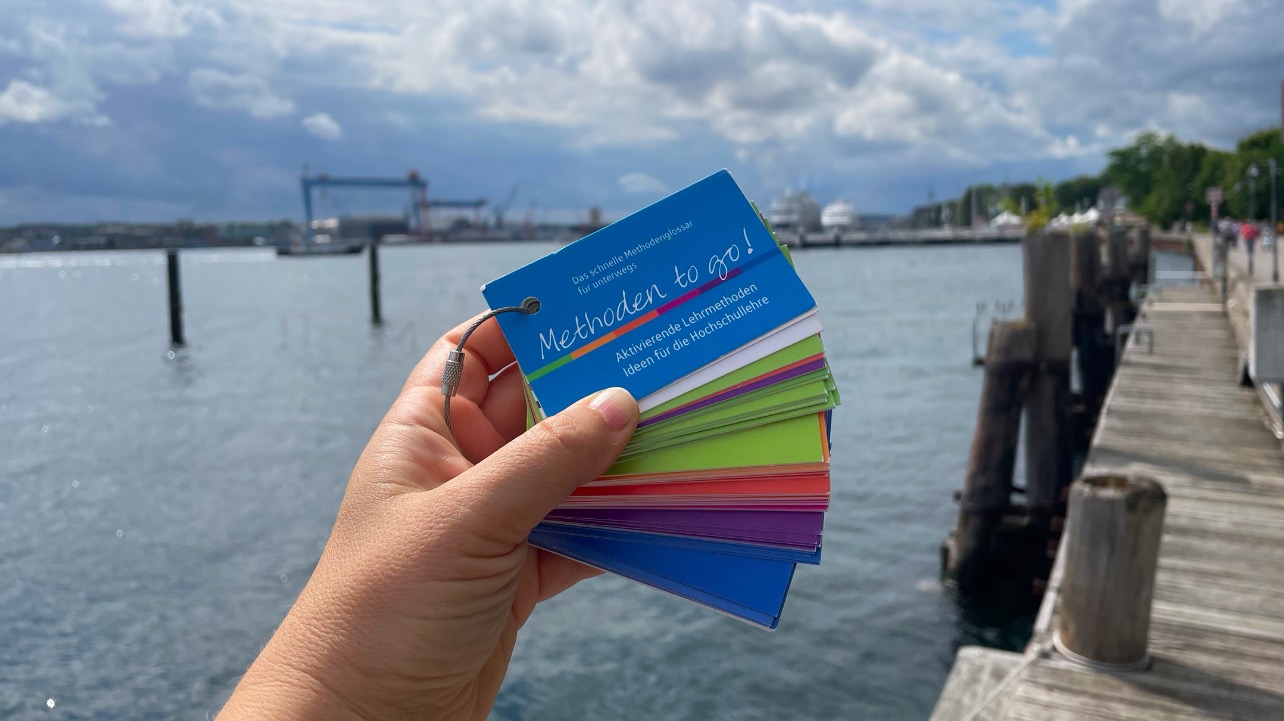
#Methods2Go: Methods to secure results in university teaching
More method ideas from E.-M. Schumacher’s “Methoden to go” pool of suggestions!
Today: methods to secure results.
Learning walk
I’ve been using plenty of virtual “gallery walkes” recently, where students have worked on a joint google slides document (either each on their own slide, or each group on their own slide) and we then go through those slides together. There are several ways to do this walk — either students go through the slide deck on their own or with their groups, potentially discussing things and leaving comments, or we go through all the slides together and talk about them with the large group. But obviously, something similar works really well in in-person meetings, too (and that’s where the method originally came from).
In a “learning walk” (or gallery walk), visualized key results are put up throughout a room and students walk from one to the next to recapitulate the ideas. They could be guided by a specific question (probably a good idea) or just use this as an opportunity to recap everything they learned so far.
I can imagine this really well at the end of a semester, with key graphics on display (possibly without captions) and the task to make sure that everybody can explain all of the graphics. I would then encourage students to talk to each other, or even to leave notes with key points, thus co-creating the explanations for the key graphics. I might start out with having small groups work on a first draft for each of the graphics, and then open that up for peer feedback + additional points being added throughout the duration of the learning walk.
Learning diary
In a learning diary, students document their learning process. This can happen as part of an assessment, or formative feedback, or without ever showing it to a teacher. What I like about learning diaries is the more or less continuous documentation of the learning process, and I think it’s a helpful and motivating routine to take on, and also great to make sure notes stay in one place and easily accessible.
I have used what I thought of as “lab books” (but which is basically a learning diary) for many years now, and that’s exactly how I use them: To have all my notes in one place. On talks I’ve attended, workshops I’ve joined, articles I have read, goals I have set, tasks I have worked on (sometimes I set the first double page up as a Kanban board with the columns “waiting”, “to do”, “doing”, “done”, and post small sticky notes to the respective places, and then once a month I put all the “done” notes on a page for that month, thus creating an archive of what I achieved that month. Super satisfying, because usually this stuff does not become tangible that way!).
I’m using actual paper books for this (and I don’t see that changing anytime soon — commitments made on paper make me feel a lot more committed to them than if I just type something, and also I remember my notes by where something was on a page, what pen I used, and other similar pointers), but I am sure there are plenty of virtual methods that might work just as well or even better for others.
Structural mapping technique
A teacher provides flashcards or sticky notes with key terms, students use them to map out connections on a large piece of paper. It’s as easy as it sounds, but great for students to discuss relations between terms, maybe adding others that they need to bridge “long distances” or that they think are important to include.
I like the idea of students representing structures of concepts not just by describing them with words, but by how they sort them in space. It makes discussions a lot easier because miscommunication becomes more obvious when there are physical representation of a shared (or not) understanding.
Glossary
Throughout the semester, difficult and/or technical terms are collected and explanations for those terms are written in a shared document, either by individual students taking turns, by small groups, or by the whole class. Those terms and corresponding explanations are collected and distributed to everybody to use as glossary in preparation for the exam, or just for future reference. Love this as a co-created product of shared understanding!
That’s it for today! We’ll continue next #TeachingTuesday with “methods to end a lesson with”.
What other methods do you like to secure results at the end of a lesson?